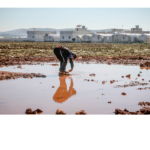
Risks of nanos in water

By the AVICENN team – Last modification May 2020
Risks of nanos in water
The marketing and use of manufactured nanomaterials has increased considerably since the early 2000s in many fields: cosmetics, textiles, household appliances, sports equipment, glass and construction materials, cars, aeronautics, boats, food, etc.
More and more nanomaterials, nanoparticles or nanoparticle residues are present in water (from wastewater, some continue on to the treatment plants, then into rivers and streams). With what consequences for the aquatic fauna and flora? What about the microorganisms in the soil on which the sludge from the wastewater treatment plant is spread? Concerns are emerging among a growing number of stakeholders. Who is doing what on these different aspects?
On all these questions, only scattered information is available today, often difficult to understand for the non-specialist or addressing only a particular aspect without giving an overall vision.
Therefore, this dossier initiated in 2015 gathers the available information as well as the issues that arise today and could become a problem if no action is taken by the various institutions involved.
It is a base that we wish to complete and update according to the evolution of knowledge: your contributions are welcome!
Our information sheets on the subject
Our latest news
Upcoming Nano Agenda

- Webconference for analysis laboratories, plant fertilizer manufacturers and distributors, public authorities…
- Moderated by David Krupka, nanotechnologies development manager at AFNOR Normalisation and Emilie Langlois-Bertrand, nantechnologies standardization project manager.
- In partnership with Armand Masion, CNRS Research Director, and Sandrine Mocoeur, Health, Safety, Environment and Quality Manager at SYNGENTA.
- This exchange will also be an opportunity to explore the creation of a national platform to identify standardization needs.
- Website: www.afnor.org/evenement/nanotechnologies-agriculture-cadre-pratique-responsable/
- 8th Congress of Occupational Medicine and Health (CNMST 2026)
- Theme 5: Emerging pathologies and risks, Mr Henri Bastos (ANSES), Pr Lynda Bensefa-Colas (AP-HP), Dr Catherine Nisse (CHU Lille)
- Website: www.medecine-sante-travail.com
- 20th meeting of the “nano and health” dialogue committee
- Organizer: ANSES
Any questions or comments? This information sheet compiled by AVICENN is intended to be completed and updated. Please feel free to contribute.
File originally created in February 2015



